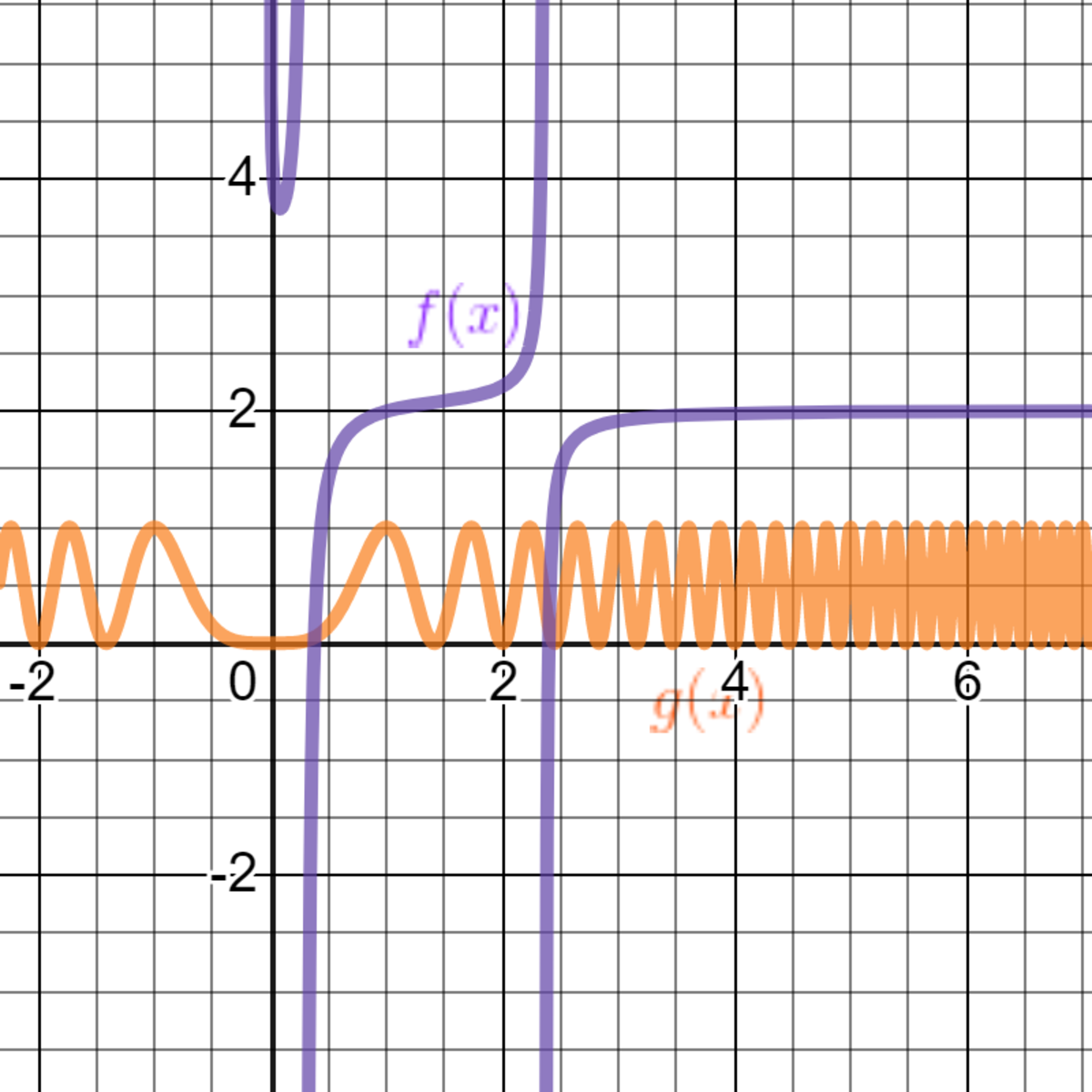Just some Limit
f ( x ) = 9 x 2 − 2 e x x − 9 x + 2 e x x ln ( x ) − ln ( x ) + 2
g ( x ) = sin 2 ( 2 π x 2 )
lim x → 1 g ( x ) f ( x )
This section requires Javascript.
You are seeing this because something didn't load right. We suggest you, (a) try
refreshing the page, (b) enabling javascript if it is disabled on your browser and,
finally, (c)
loading the
non-javascript version of this page
. We're sorry about the hassle.
2 solutions
If you view f(x) & g(x) graphically, the limits become apparent.

One can approach this directly.
First of all, g ( x ) is continuous at x=1, so, we can just substitute g ( 1 )
Next, consider f ( x ) when x approaches 1,
( x − 1 ) ln ( x ) tends to 0 as ( x − 1 ) 2 as x tend to 1 but the denominator tend to 0 as ( x − 1 ) , so, the whole terms tends to 0. This can be proven very easily by Taylor's expansion.
So, the answer is 2